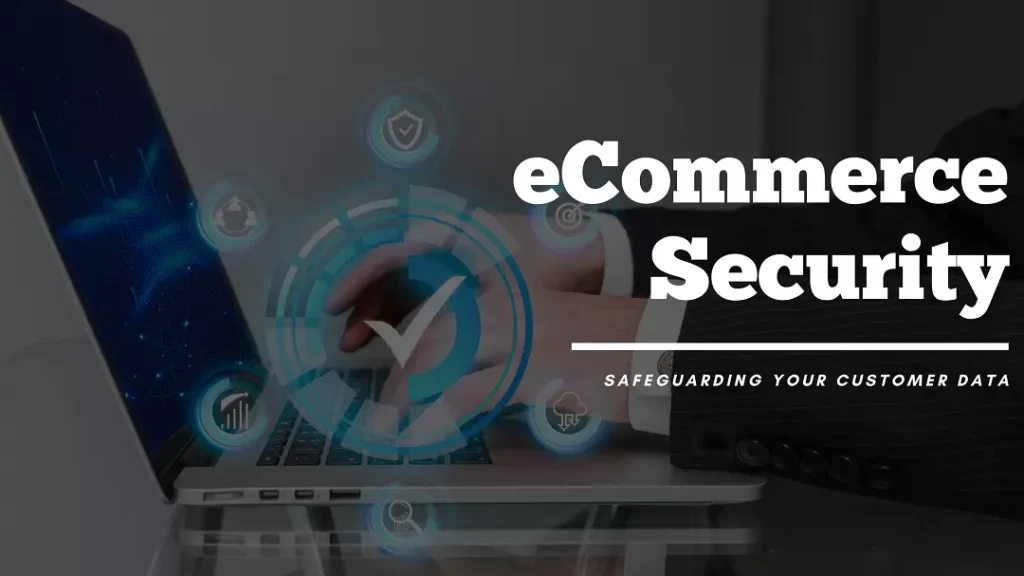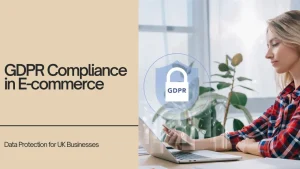Step into the world of online shopping, where you can find your favourite products with just a few clicks. But hold on a second!
Have you ever wondered about your or your customer’s data safety while shopping online? That’s where E-commerce Security swoops in like a superhero.
This article will break down the jargon and show you how businesses lock down your data. It’s like putting a digital padlock on your online shopping cart.
So, buckle up as we take you through the basics of keeping your info safe and sound in the vast world of e-commerce.
Let’s make sure your next online spree is not just fun but also secure!
Security in eCommerce: a brief overview
Picture this: You’re at a digital party, handing over your credit card details for that awesome purchase.
Now, what if the party has no bouncer? Chaos, right? That’s where E-commerce Security steps in—like the superhero of the online world.
Why does it matter? Well, nobody wants their personal info doing a risky dance without a safety net. E-commerce security is that safety net. It’s not just about protecting your data; it’s about creating a trustworthy space for you to do your online thing.
Without it, we’d be in a digital disaster movie—cue the scary music. E-commerce Security is the hero that stops the bad stuff from happening.
Common cybersecurity threats in eCommerce
In the world of online shopping, there are some sneaky digital dangers we should watch out for.
First up, there’s phishing, where bad guys trick you into sharing important stuff like passwords or credit card info. Then, there’s malware, a kind of digital germ that can infect shopping websites and mess with your personal info.
Ransomware is like a digital kidnapper, locking up your important data and demanding money to set it free. Another troublemaker is DDoS attacks, which try to overload websites and make them crash.
With more folks shopping on their phones, there’s also a risk of bad apps and tricky text messages trying to steal your info. These cyber threats aren’t just a headache—they can mess with your money and trust.
To stay safe, online stores need to use strong shields like fancy encryption, extra verification steps, and regular check-ups to keep the bad stuff out and make sure your online shopping stays as safe as it can be.
Key components of eCommerce security
Making sure online shopping is safe is super important, and there are a few key things that help keep it secure. First off, there’s something called encryption that protects your info, like credit card details, when you’re buying stuff online.
It’s like a secret code that keeps your data safe during the transaction. Then, there’s user authentication, which is like having a special key to make sure only you can access your account. Adding an extra layer of security with things like two-step verification is always a good idea.
Regular check-ups on the security system, kind of like updating your phone, help fix any weak spots and keep everything safe. When you’re paying, a secure payment gateway is like a guard making sure your money info is locked up tight.
Think of firewalls and intrusion detection systems as the superheroes stopping bad guys from getting into the website where you shop.
And remember, teaching both shoppers and the people who work at the store about staying safe online is a big part of the plan, too.
So, a secure online shopping place uses a mix of secret codes, special keys, regular check-ups, and superhero guards to make sure everything stays protected!
Protecting customer data and improving the security of your e-commerce site can be accomplished by following the steps below:
1. Encryption is non-negotiable
One of the foundational pillars of e-commerce security is encryption. Implementing SSL (Secure Sockets Layer) or its successor, TLS (Transport Layer Security), is crucial for encrypting data in transit between the customer’s browser and your server. The purpose of this is to ensure that sensitive information, such as credit card information, remains protected during transmission from prying eyes.
2. Stay updated: patch and update regularly
Cybersecurity threats are ever-evolving, and so should be your defence mechanisms. Regularly updating and patching your e-commerce platform, including the underlying software and plugins, is imperative. Outdated systems are more susceptible to exploitation, making timely updates a non-negotiable aspect of your security strategy.
3. Implement multi-factor authentication (MFA)
Enhance the security of customer accounts by implementing multi-factor authentication. Use multiple forms of identification before granting access, such as passwords and temporary codes sent to mobile devices. This adds a layer of defence, making it significantly harder for unauthorized individuals to access sensitive information.
4. Secure payment gateways
Choosing a secure payment gateway is pivotal in ensuring the safety of financial transactions. Opt for reputable and PCI DSS (Payment Card Industry Data Security Standard) compliant payment gateways. These gateways adhere to stringent security standards, minimizing the risk of data breaches and instilling trust in your customers.
5. Regular security audits
By conducting regular security audits, you can identify and address potential vulnerabilities before they become exploitable. Engage with professional security experts to thoroughly assess your e-commerce platform, infrastructure, and codebase. This not only helps in mitigating risks but also demonstrates your commitment to maintaining a secure environment.
6. Educate and train your team
In terms of security breaches, human error remains a significant factor. Ensure that your team is well-versed in security best practices and protocols. Regular training sessions should be provided to employees on recognizing phishing attempts, using strong passwords, and recognizing potential security threats. A well-informed team are crucial to defending against cyber threats.
7. Data backups and disaster recovery
In a security breach, having robust data backup and disaster recovery mechanisms in place is vital. Regularly back up customer data and critical business information, and ensure your disaster recovery plan is tested and ready to deploy if needed. This safeguards customer information and enables a swift recovery in case of an unforeseen incident.
Conclusion
Safeguarding customer data in e-commerce requires a multi-faceted and proactive approach. By implementing encryption, staying updated with security patches, employing multi-factor authentication, securing payment gateways, conducting regular security audits, educating your team, and having robust backup and recovery processes, you can fortify your eCommerce fortress and instil confidence in your customers. These best practices build a resilient and trustworthy e-commerce ecosystem in an era where data security is non-negotiable.





